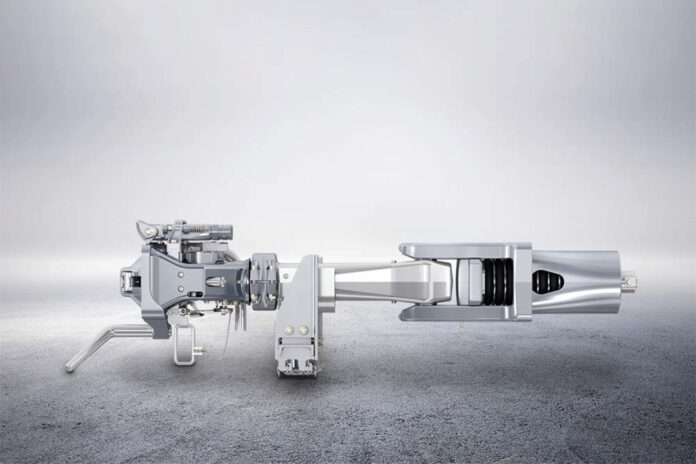Knorr-Bremse has said it is developing a portfolio of couplers intended to be a” key lever” in bringing freight into the digital age.
Their Digital Automatic Coupler (DAC), it hopes, will play a key part in the business’s end-to-end solutions for automating and digitalising rail freight traffic.
On building the first prototypes in 2022, the business will test them in pilot projects and prepare for high-volume use, addressing what it says is strong market demand.
The business says it is set to be in a strong position, with the potential for the firm helping to retrofit up to 500,000 freight cars and 17,000 locos in the EU in the second half of the decade.
Knorr-Bremse is designing the DAC to act as the centrepiece of the digitised freight trains of the future. Currently, freight cars and locomotives are always coupled together manually; apart from mechanical couplers, the only other link between them is the pipe carrying compressed air for the braking systems. The DAC, on the other hand, will house an air line together with data and power lines supplying the entire freight train – what the business describes as a world first.
Consequently, Knorr-Bremse says it will be able to offer a comprehensive package of automation options for digital freight trains. An electropneumatic (EP) braking system, automatic brake testing, data and communication services, a smart energy management system, condition-based maintenance (CBM) and cybersecurity are among the many potential applications.
This solution is complemented by Knorr-Bremse working on expanding its portfolio of passenger train couplers.
Dr. Jürgen Wilder, member of the executive board of Knorr-Bremse AG and responsible for the Rail Vehicle Systems division says: “Based on tonnes per kilometer, rail is the mode of transportation with the lowest carbon emissions. But to build the backbone of an environmentally friendly freight-handling system and become competitive with other modes of transportation, it is essential to invest in new technologies and roll them out across the industry. We regard the Digital Automatic Coupler as a key lever for bringing rail freight into the digital age. If the political will to support this huge project continues, and the process of upgrading freight cars is kicked off in the second half of this decade, we believe we’ll be in a position to become a leading supplier of DACs and many other automation systems for the rail freight industry.”







































 0113 2082620
0113 2082620 info@railbusinessdaily.com
info@railbusinessdaily.com 15 Mariner Court, Wakefield WF4 3FL
15 Mariner Court, Wakefield WF4 3FL

